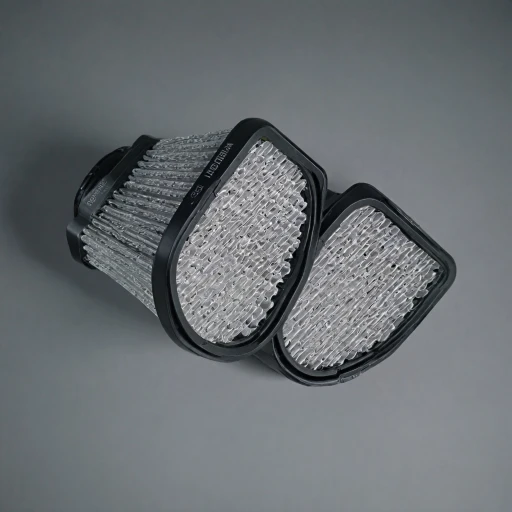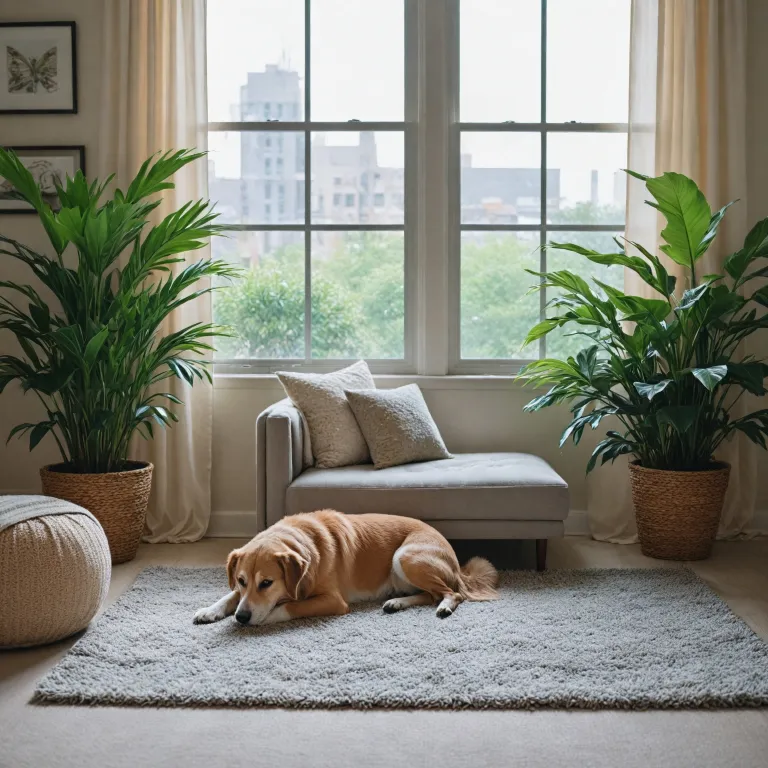Understanding the impact of allergens and pet dander
The Challenges of Allergens and Pet Dander
Allergens are ubiquitous in our environment, and for allergy sufferers and pet owners, managing these irritants can be a daily struggle. Pet dander, a common allergen, consists of tiny flecks of skin shed by animals with fur or feathers. It might seem harmless, but these particles can significantly impact air quality and, consequently, your well-being.
Understanding how allergens and pet dander permeate the home environment is crucial when seeking relief. These particles are incredibly light, easily floating through the air, settling on furniture, and becoming trapped in carpets. Over time, without proper measures, they can accumulate and exacerbate respiratory conditions, triggering allergies and asthma.
To combat this, using an air purifier specifically designed for allergy sufferers and pet owners can be particularly effective. Key features to consider include a HEPA filter, which captures tiny pollutants, and an activated carbon filter that absorbs odors from pets.
It's not just about selecting any purifier; understanding the CADR (Clean Air Delivery Rate) is essential for judging its effectiveness. The CADR indicates the volume of filtered air delivered by the purifier and helps gauge its performance in removing allergens. A model like the Levoit Core series, known for its excellent filtration capabilities, may provide the relief you need. For more in-depth information on how to address pet allergies specifically, you might find this detailed guide about
relief from pet allergies helpful.
Opting for a purifier equipped with smart features, such as auto mode and air quality sensors, aids in maintaining a clean, comfortable environment. These purifiers adjust their power and performance automatically based on the current air quality, ensuring optimal results with minimal noise disruption. Investing in an air purifier not only enhances indoor air quality but also contributes to a healthier lifestyle, free from the constant worry of allergens and pet dander.
Key features to look for in an air purifier
Essential Factors to Consider When Buying an Air Purifier
When you're in the market for an air purifier, especially as an allergy sufferer or pet owner, it's crucial to focus on certain features to ensure you're making a well-informed purchase. Below are some vital elements that should be at the top of your list:
- Filtration System: Seek out purifiers with a high-efficiency particulate air (HEPA) filter, known for capturing 99.97% of particles, including pet hair and dander. Additionally, a carbon filter can help with removing odors and volatile organic compounds (VOCs).
- Air Quality and CADR: Measured in cubic feet per minute (CFM), Clean Air Delivery Rate (CADR) determines how efficiently an air purifier can clean air; higher numbers equate to faster air purification. Consider the room size to find a compatible CADR for optimal performance.
- Noise Level: Check the noise level, typically measured in decibels (dba), as this can affect your comfort, especially in sleeping areas. Some models have a "quiet mode" or "sleep mode" for reduced noise.
- Smart Features and Auto Mode: Smart purifiers equipped with a quality sensor can automatically adjust settings based on particle detection, providing hassle-free operation.
- Size and Design: Consider the purifier’s dimensions in inches and weight, particularly if you plan to move it around. Compact models like the Levoit Core can fit seamlessly into smaller spaces.
- Energy Efficiency: Assess the power consumption, as energy-efficient models can save on electricity bills without compromising air quality.
Beyond these features, it's beneficial to review
specific air purifiers for homes with pets as they offer tailored solutions for pet owners, ensuring a cleaner and healthier environment. By considering these key attributes, you'll be better equipped to choose an air purifier that aligns with your needs, offering reliable performance and improved air quality in your home. Remember, technology and maintenance are also central to consistent and effective purification.
Top air purifiers for allergy sufferers and pet owners
Expert Picks for Maintaining a Clean Living Space
For allergy sufferers and pet owners, identifying the right air purifiers tailored to your specific needs can significantly improve your living environment. To make this simpler, let's explore some top-performing models that provide excellent air quality, focusing on elements like filter type, particle removal efficiency, and smart features.
Levoit Core 300: This unit is renowned for its affordability and reliable performance. It features a high-efficiency HEPA filter that captures 99.97% of airborne particles, such as pet dander and allergens. The device has a CADR (Clean Air Delivery Rate) of 135 CFM, which effectively purifies spaces up to 219 square feet. Additionally, its compact size (7.9 x 7.9 x 12.6 inches) ensures it fits seamlessly into any room without occupying much space.
Austin Air HealthMate: Known for its robust build and exceptional filtration system, the Austin Air HealthMate uses a combination of medical-grade HEPA filters and activated carbon to remove dust, pet hair, and even toxins. Although it is priced on the higher side, its high performance in improving indoor air quality makes it a worthwhile investment for those dealing with substantial allergy issues due to pets.
Smart Features and Quiet Operation
Many modern air purifiers come with smart features that optimize their function and convenience. Look for purifiers equipped with auto mode and quality sensors that adjust the fan speed depending on detected particles, ensuring efficient cleaning without manual intervention.
Noise level is another significant factor for many users. A device operating at a comfortable dBA is crucial, especially if you plan to use it in a bedroom or office. Models like the Levoit Core boast a quiet sleep mode option, promoting uninterrupted rest while continuously clearing the air from allergens.
Energy Efficiency
With rising concerns about energy consumption, consider air purifiers labeled for energy efficiency, ensuring they function effectively without a significant increase in power bills. Smart modes and the inclusion of a pre filter for larger particles can also contribute to better energy usage and filter longevity.
Each of these air purifiers brings its unique strengths to the table. Depending on your specific needs—whether that's combating persistent smoke particles or dealing with a home filled with pet hair—there's a model suited for every requirement. Explore more about finding the ideal unit for
eliminating cooking odors for a comprehensive understanding of your air purification needs.
Comparing air purifier technologies
An In-Depth Look at Popular Air Purification Technologies
Choosing the right air purifier involves understanding the various technologies that power these devices. Here's a breakdown of some common technologies found in air purifiers, tailored to improve air quality for allergy sufferers and pet owners.
- HEPA Filters: High-Efficiency Particulate Air (HEPA) filters are a staple in effective air purification. They are adept at capturing particles like dust, pollen, and pet dander due to their fine mesh construction. Suitable for those aiming to filter out allergens, HEPA filters are known for their reliability.
- Activated Carbon Filters: Often found in combination with HEPA filters, activated carbon filters excel at removing odors and volatile organic compounds (VOCs). For homes with pets, these filters help in absorbing pet-related odors, enhancing indoor comfort.
- Ionizers: These devices release ions that attach to airborne particles, causing them to fall out of the air. It's an added method to capture small particles not trapped by filters alone, though they can produce ozone, which is a consideration for air quality.
- UV Light Technology: UV air purifiers use ultraviolet light to kill or inactivate airborne pathogens and microorganisms. While effective for disinfection, it is usually paired with other filter systems for comprehensive cleaning.
- Pre-Filters: These capture larger particles, like pet hair, a necessity for preventing premature clogging of the main filters, ultimately extending their life.
For allergy sufferers and pet owners, the performance of an air purifier can be measured through several metrics:
- Clean Air Delivery Rate (CADR): This measures the efficiency with which a purifier cleans the air, indicated in cubic feet per minute (cfm). A higher CADR means faster air purification, which is crucial in homes with pets and allergies.
- Noise Level: Consider the device's decibel rating (dBA) for a quieter environment, especially for night use.
- Smart Features: Auto mode and quality sensor capabilities allow the device to adjust its power according to air quality, promising both convenience and power efficiency.
- Size and Portability: Consider the physical dimensions and weight, ensuring it fits comfortably in your space without being obtrusive.
Whether you're evaluating well-regarded brands such as Levoit, which offers models like the Levoit Core series known for their robust HEPA filtration, or Austin Air renowned for their durable builds, understanding these features aids in making an informed decision. Consider supplier-provided video reviews for real-world insights into how these devices operate under different conditions.
Maintenance tips for optimal performance
Essential Maintenance Practices
Ensuring your air purifier performs at its best requires a commitment to regular maintenance. A well-maintained unit not only contributes to clean air but also enhances the lifespan of your investment. Here are some crucial tips to keep your purifier operating optimally:
- Regularly Check Filters: HEPA and carbon filters are crucial for trapping allergens and pet dander. Check the manufacturer's guidelines for replacement intervals. Some purifiers, like the Levoit Core series, may have filter indicators to alert when it's time for a change. Regular filter changes ensure the absorption of particles such as smoke, pet hair, and other pollutants remains effective.
- Clean the Pre-filter: A pre-filter captures larger particles and prolongs the life of the main filter. Regular vacuuming or washing, where applicable, prevents clogging and maintains air quality performance.
- Monitor Noise Levels: Over time, an air purifier's noise level might increase if it's struggling with clogged filters or mechanical issues. Keep an eye on the dBA levels to ensure your unit is operating efficiently.
- Utilize Smart Features: If your air purifier includes smart features or an auto mode, use them to optimize its operation based on air quality sensors.
- Maintain the Quality Sensor: Pet owners and allergy sufferers benefit significantly from air purifiers with quality sensors. Regularly clean these sensors to ensure they accurately gauge air quality.
For detailed guidance on selecting the right air filter for homes with pets, you can refer to this resource.
User testimonials and expert opinions
Real-life insights and professional evaluations
When it comes to understanding how air purifiers perform in real-world situations, user testimonials and expert evaluations provide invaluable insights. These firsthand experiences can help allergy sufferers and pet owners gauge how effectively a particular purifier tackles invisible allergens and pet dander.
Many users report noticeable improvements in air quality and a reduction in allergy symptoms after introducing HEPA filter-equipped purifiers. This filter type, known for its efficiency in capturing small particles like pollen, dust, and pet dander, is frequently praised in product reviews.
A significant number of pet owners highlight the effectiveness of activated carbon filters, specifically for neutralizing pet odors and capturing pet hair. For instance, some users commend the Levoit Core series for its multi-layer filtration system that includes a pre filter to initially capture larger particles.
When it comes to smart features, auto mode and air quality sensors receive positive feedback for simplifying the operation. These features allow purifiers to adjust their settings automatically based on the air quality detected, ensuring optimal performance without constant user intervention.
Experts also underscore the importance of checking the CADR rating, as it indicates the air purifier’s capability. A higher Clean Air Delivery Rate (CADR) means quicker and more efficient air purification. Models like Austin Air often get highlighted in expert reviews for their robust build and high CADR ratings.
Noise levels are another frequently mentioned aspect in both user reviews and expert evaluations. While many models offer efficient air purification, quieter units are preferred for bedrooms or workspaces to ensure a peaceful environment.
Whether it's through video reviews or detailed written evaluations, these collective opinions from users and industry experts can guide potential buyers in choosing the best air purifier for their needs, balancing performance, price, and features.

